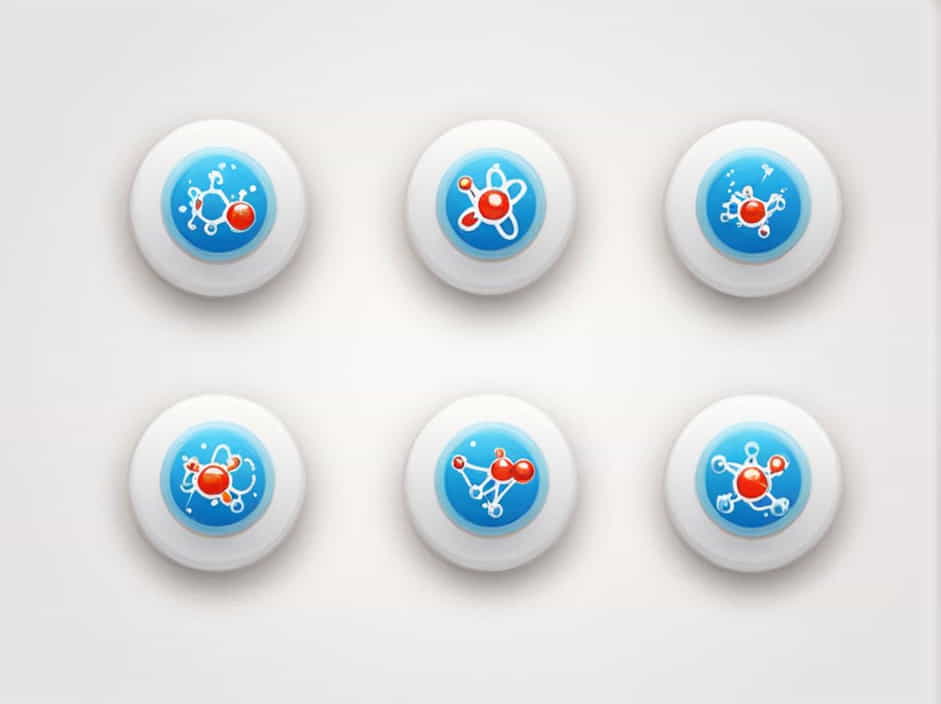Molecularity is an essential concept in chemical kinetics, referring to the number of reactant molecules involved in an elementary reaction. It plays a crucial role in determining how chemical reactions proceed at the molecular level. Unlike order of reaction, which is determined experimentally, molecularity is a theoretical value assigned based on the reaction mechanism.
This content will explain molecularity, its types, and provide suitable examples to clarify the concept.
Definition of Molecularity
Molecularity is defined as the number of reactant molecules that collide and participate in an elementary step of a reaction. It describes the fundamental nature of a reaction at the molecular scale.
Key Features of Molecularity
- Applies to Elementary Reactions Molecularity is only defined for elementary reactions, not overall complex reactions.
- Always an Integer The value of molecularity is always a whole number (1, 2, or 3), as fractional or zero molecularity does not exist.
- Cannot Be Greater Than Three Reactions involving more than three molecules in a single step are extremely rare due to the low probability of simultaneous collisions.
Types of Molecularity
There are three main types of molecularity based on the number of reactant molecules involved:
1. Unimolecular Reactions (Molecularity = 1)
In unimolecular reactions, a single reactant molecule undergoes decomposition or rearrangement to form products. These reactions typically occur when the molecule absorbs energy, making it unstable.
Example: Decomposition of Ammonium Nitrite
- In this reaction, a single molecule of ammonium nitrite decomposes into nitrogen gas and water.
- Since only one reactant molecule is involved, the molecularity of this reaction is unimolecular.
2. Bimolecular Reactions (Molecularity = 2)
Bimolecular reactions involve the collision of two reactant molecules, leading to the formation of products. These reactions are the most common in nature because two-body collisions are more probable than three-body collisions.
Example: Formation of Hydrogen Iodide
- In this reaction, one molecule of hydrogen collides with one molecule of iodine to form hydrogen iodide.
- Since two reactant molecules participate, the reaction is bimolecular.
3. Termolecular Reactions (Molecularity = 3)
Termolecular reactions involve the simultaneous collision of three reactant molecules to form products. These reactions are rare because the probability of three molecules colliding with the correct orientation and sufficient energy is very low.
Example: Formation of Ozone
- Here, an oxygen atom (O) reacts with an oxygen molecule (O2) and a third body (M), which helps stabilize the newly formed ozone molecule.
- Since three molecules are involved in the reaction, it is classified as termolecular.
Molecularity vs. Order of Reaction
Although molecularity and order of reaction are related to reaction kinetics, they are not the same.
| Feature | Molecularity | Order of Reaction |
|---|---|---|
| Definition | Number of reactant molecules involved in an elementary step | Sum of exponents of reactant concentrations in the rate law |
| Applicable To | Only elementary reactions | Overall or complex reactions |
| Determined By | Theoretical mechanism | Experimental data |
| Possible Values | Always a whole number (1, 2, or 3) | Can be fractional or zero |
| Changes with Conditions? | No | Yes |
For example, in the reaction:
- The molecularity is three (termolecular) because two NO molecules and one O2 molecule participate.
- The order of reaction, however, is determined experimentally and may not always match the molecularity.
Importance of Molecularity in Chemical Kinetics
Understanding molecularity helps chemists:
- Predict Reaction Mechanisms Molecularity provides insight into how a reaction progresses at the molecular level.
- Determine Reaction Rates Unimolecular and bimolecular reactions have different rate laws, affecting reaction speed.
- Design Industrial Processes Many chemical manufacturing processes depend on reaction kinetics, making molecularity an important factor in optimizing production.
Molecularity is a fundamental concept in chemical kinetics that describes the number of reactant molecules involved in an elementary reaction. It is classified as unimolecular (1 reactant), bimolecular (2 reactants), or termolecular (3 reactants), with termolecular reactions being the least common. Unlike order of reaction, molecularity is a theoretical value that does not change with experimental conditions.
By understanding molecularity, chemists can better predict reaction behavior, optimize industrial processes, and advance the field of reaction kinetics.
